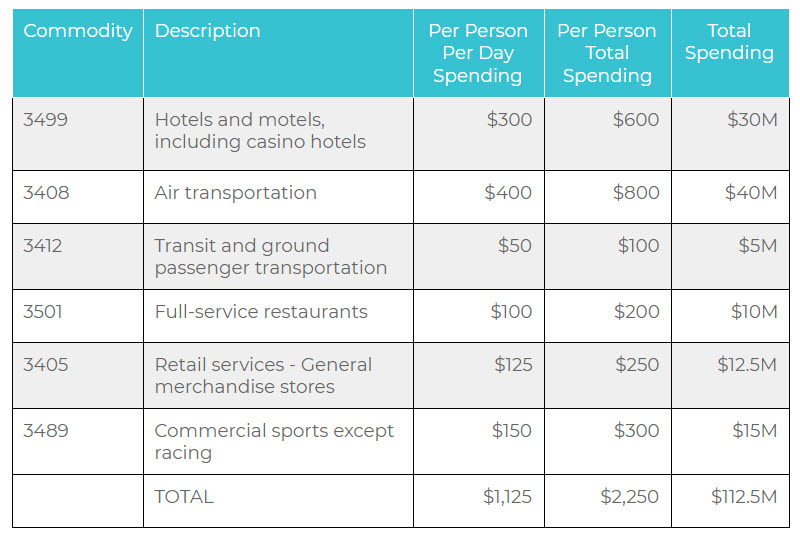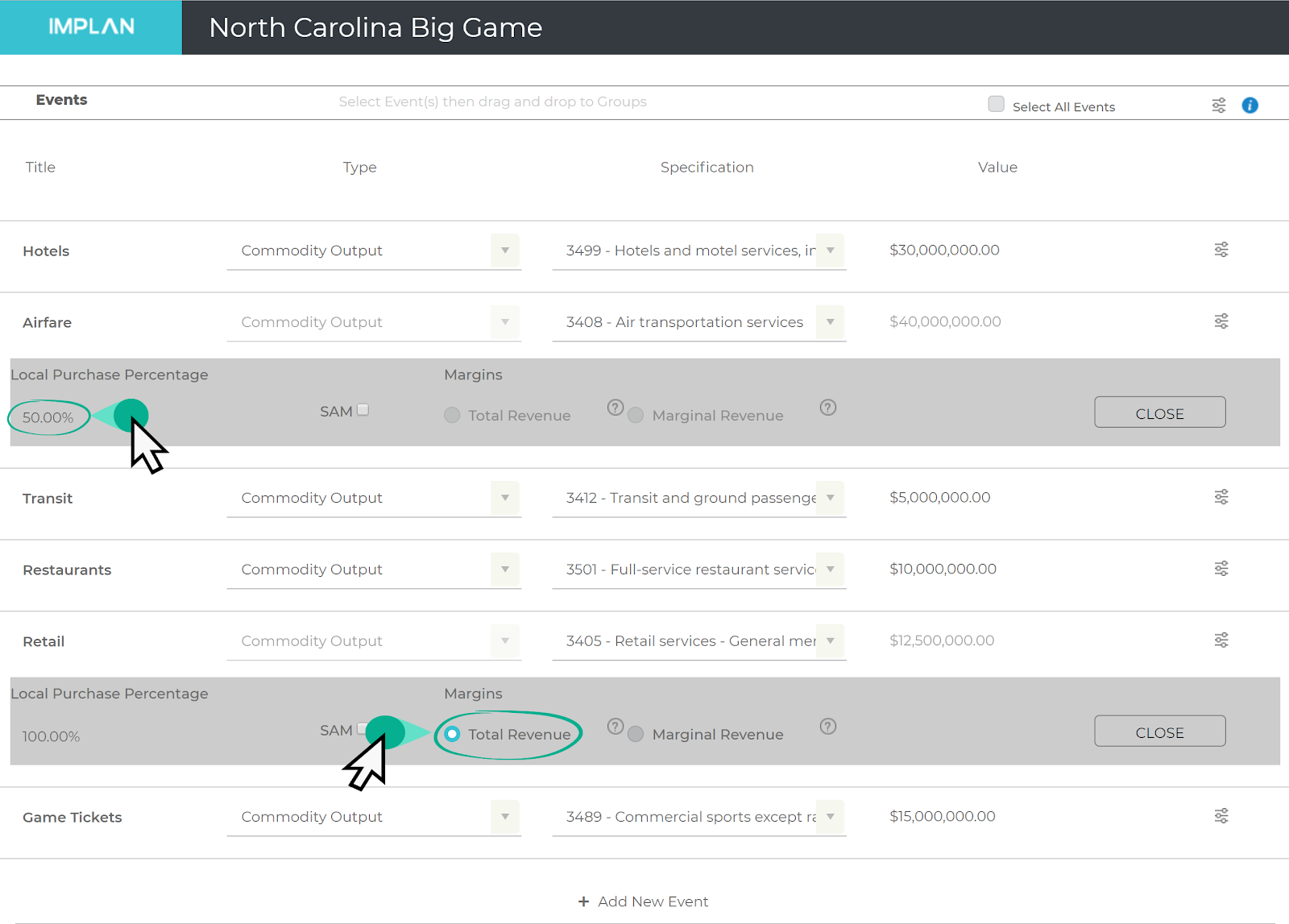INTRODUCTION:
More and more people are interested in the economic impact of tourism – how guests in a region spend their money when visiting. The World Travel & Tourism Council estimates that one in ten jobs are related to tourism, so it’s no wonder that governments and economic development organizations are interested in the local and regional effects. Public money is invested not only in infrastructure and improvements to encourage tourism, but also on large marketing campaigns domestically and internationally.
Tourism is of great interest to many regions of the country. In impact analysis, tourism is unique among export activities. Exports are typically thought of as goods or services shipped by local businesses to purchasers located outside the region. Tourism, on the other hand, involves purchasers traveling into the region to acquire goods and services from local businesses. Tourism is most often classified by the activities in which non-locals participate: film festivals, fall colors, professional sporting events, historical sites, conventions, and so forth. Lodging, restaurants, retail, and recreational services typically rely upon this kind of export as key to their success. Because tourism comprises a wide variety of activities and types of businesses, there is no single “Tourism” sector for modeling impacts.
Stynes (n.d.) poses just a few of the questions that an economic impact analysis of tourism spending can help the analyst answer:
- How much do tourists spend in the area?
- What portion of sales by local businesses is due to tourism?
- How much income does tourism generate for households and businesses in the area
- How many jobs in the area does tourism support?
- How much tax revenue is generated from tourism?
KEY CONSIDERATIONS:
DEFINING TOURIST
For an impact on the state, anyone traveling from outside would be considered a tourist. Why do we only include non-local tourists in the analysis? Sales to final demand are the classic activities modeled by input-output analysis. These sales (direct effects) result in new production of goods and services that initiate a chain of economic events in the region (indirect and induced effects). While local residents may spend money at these tourist attractions, their expenditures are not typically counted in tourist studies because if those tourist attractions did not exist, the residents would likely still spend that money locally. If they didn’t go to the festival, they might have spent their money bowling or at the movies. That said, a case can sometimes be made for including resident spending on tourist attractions if the study area is very small and has few alternatives for recreation, such that the existing tourist attractions keep residents’ money from leaking to other places (i.e., they keep residents from traveling elsewhere for their recreational pursuits). This is known as import substitution – someone doesn’t have to go to Nevada to gamble if their state legalizes the industry – so the money is no longer leaked out of the local economy.
TOURIST TYPES
There are many different ways to segment tourists. For example, a single individual traveling for the biannual MCRSA/IMPLAN Conference will spend money very differently than a family heading to camp in a National Park. Also, domestic tourists and international tourists are also likely to spend very differently. Consider segmenting your groups to model different kinds of tourists separately. In general, keep these differences in mind when collecting data or analyzing data given to you. Some helpful tips are available in the article about Surveying for Input-Output.
HOW TOURISTS SPEND
Based on the parameters of the tourist survey or the source of our tourist spending data, we may not know if the responses reflect the same purchasing patterns as our local tourists, or if responses were constrained to only describe local purchases. In this case, Local Purchase Percentage (LPP) could be customized to ensure our impacts were conservative and to reflect the idea that tourist purchases in the region follow a pattern like resident purchases regarding locality.
TEMPORARY SPENDING
Tourist spending is likely somewhat more volatile than operational spending. Although it is projected to grow, influences like consumer preferences, generational differences, political climate, and economic conditions are changing the way people travel (Tour Writer, n.d.). Keep these considerations in mind when using older survey data or trying to predict too far into the future.
PREPARING DATA FOR IMPLAN:
Very simply, a study of tourist spending looks at how visitors spend money in a local economy. We are either given data on tourism spending by or must survey visitors to obtain a breakdown of their spending.
Let’s say we want to look at the economic impact of 100 people visiting an amusement park in California for the day. We are given survey results that show each person spends an average of $50 on gasoline, $25 on snacks, $150 in restaurants, and $200 on amusement park tickets, and $75 on retail merchandise, for a total of $500. We can model these through an analysis by assigning one of the IMPLAN Sectors to each of the spending categories and inputting the totals. Since we know what items people were purchasing, but not necessarily from what businesses they bought, we use Commodities.

For the gasoline, we can only assume that about half of that money would stay in the state economy; as some portion is likely leaking to other states on their road trip. To adjust for this, set the Local Purchase Percentage (LPP) to 50%. In our example, the table above is all local spending expect for the gasoline, so for each of our Commodity Events,, LPP will be left at 100%.
For the retail spending, we asked the guests what they spent while in town for the event, so we need to think about margins. The prices that were paid at stores represent Purchaser Prices or Total Revenue, so we need to check the box for Total Revenue to tell the model that to convert these to Producer Prices or Marginal Revenue before applying the Multipliers.
Note that for gasoline we will use the producing Commodity (3156 – Refined petroleum products) even though there is a retail gas station sector in IMPLAN. The reason for this is that we know exactly what was purchased from the retailer in this case (gasoline and oil) and can thus identify the producing sector (Refined petroleum products), whereas in the other retail spending categories we don’t know exactly what was purchased and thus cannot identify the producing sector. For example, we don’t know what Retail consisted of and therefore do not know how to choose between the various manufacturing sectors (tshirts, mouse ears, postcards, etc.). Thus, in this latter case the best we can do is capture the retail margin portion of the purchase, whereas in the case of gas and oil we can also capture some of the producer value (if there is a local producer), as well as the transportation and wholesale margins, in addition to the retail margin. While you could use the retail gas station Commodity (3402 – Retail services – Gasoline stores), you would only capture the retail margin.
Sometimes we need to rely on older survey data for the analysis. We might have a survey that reflects tourist spending in 2009, but we are looking to estimate the impact of tourists in our region in 2019. Since the survey is vintage 2009, the Event Year should reflect that the entered dollar values are 2009 dollars (i.e. Event Year = 2009). If we want to see the economic impact of tourist spending in 2019, we can use the Dollar Year for View on the Results page to adjust the values to 2019 dollars.
Deflators are specific to the dollar value of the investment or expenditures, it is important to ensure that the Dollar Year reflects the dollar value being entered. Because the model’s relationships are all based on the year of the data set or the Data Year (for this example, 2017), dollar values for years other than 2017 must be adjusted to 2017’s prior to those values being applied to the multipliers. This conversion is done by IMPLAN’s built-in deflators. Deflators are units of measure, not descriptions of when an Event is taking place.
THE PROCESS:
Now we are ready to put the data in IMPLAN. Create the California Region and add each line of spending as its own Commodity Output Event. In our example, we have the per person spending, so we enter that in the Event line. Then on the right side of the screen, we use the Scaling option to reflect the 100 visitors. Alternatively, we could multiply each of the Commodity totals by the 100 visitors to get the same result.


THE RESULTS:
In this example, we had 100 visitors to California, each spending $500. We used data from 2017 and are viewing the results in 2019 dollars. We also put in $75 per person in Sector 3405 – Retail services – General merchandise stores, which only captures the retail margin. Therefore, we see the total Direct Output as slightly less than the $50,000 in spending.
We can also see the large Direct Output Impact in Sector 494 – Amusement parks and arcades and Sector 501 – Full-service restaurants, which is to be expected from the large per person spending in these categories.

TIPS FROM THE WEB:
Neffke, F., Ravinutala, S., & Zuccolo, B. (n.d.). Tourist Spending Insights Provide Unprecedented View of Global Tourism. Retrieved from
https://www.hks.harvard.edu/centers/cid/about-cid/news-announcements/tourist-spending-insights.
Stynes, D. (n.d.). Economic Impacts of Tourism. Retrieved from https://msu.edu/course/prr/840/econimpact/pdf/ecimpvol1.pdf.Tour Writer. (n.d.). Tourism industry statistics for 2018 and beyond. Retrieved from https://www.tourwriter.com/travel-software-blog/2018-tourism-stats/
US Travel. (2019). U.S. Travel and Tourism Overview (2018). Retrieved from https://www.ustravel.org/system/files/media_root/document/Research_Fact-Sheet_US-Travel-and-Tourism-Overview.pdf.
World Travel & Tourism Council. (2019). Travel & Tourism Economic Impact. Retrieved from https://www.wttc.org/economic-impact/.

 HOUSEHOLDS:
HOUSEHOLDS: INDUSTRIES:
INDUSTRIES: GOVERNMENT:
GOVERNMENT: CONSTRUCTION:
CONSTRUCTION:





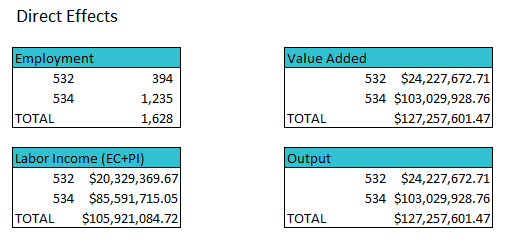


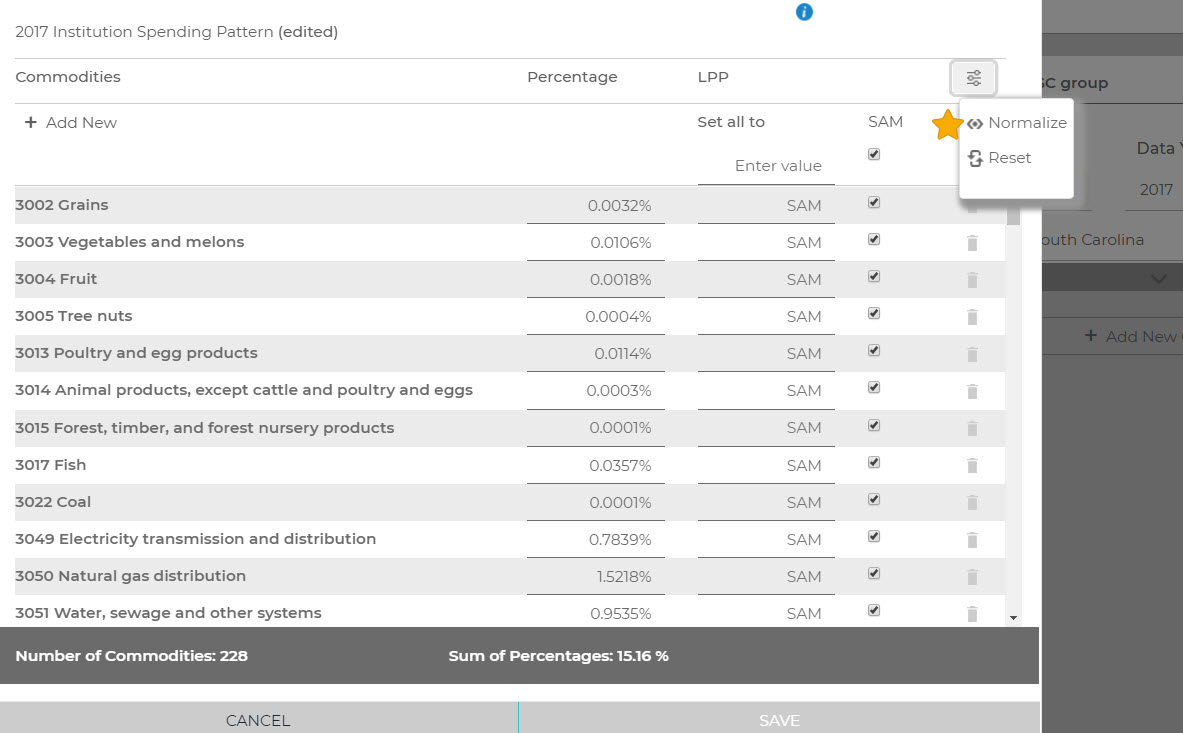

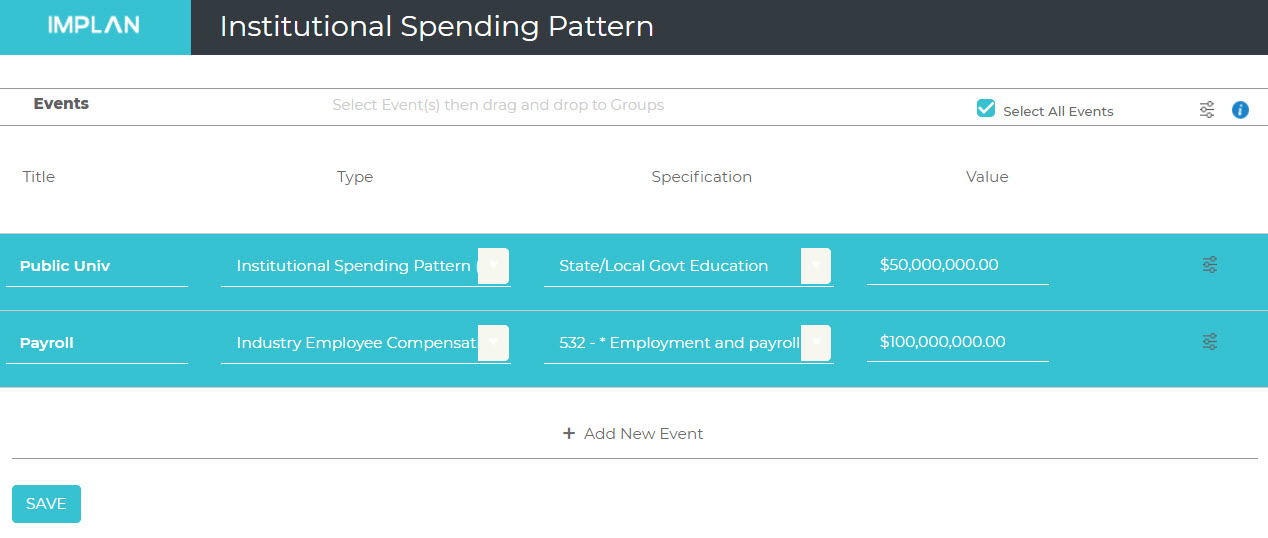
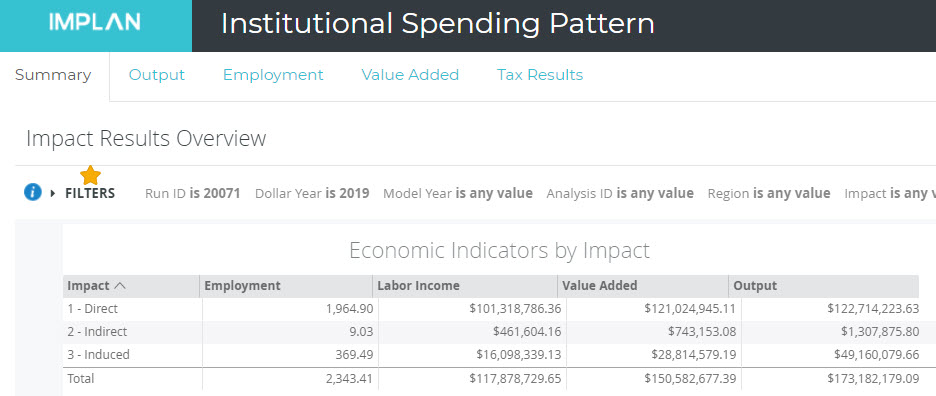













 Student Spending
Student Spending Tourist Spending
Tourist Spending Business Spending
Business Spending
